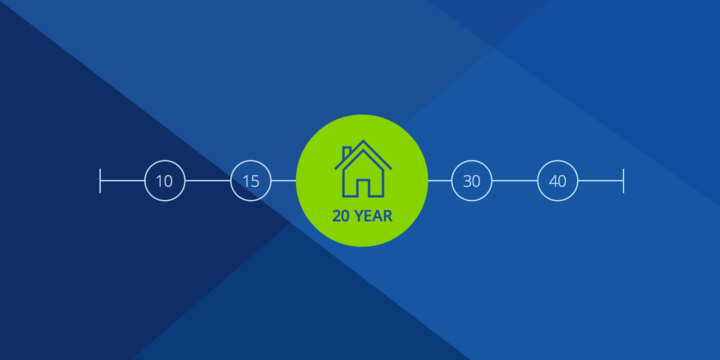What Is a Conforming Loan?
Are you interested in a conforming loan? Learn about what it is, what are the alternatives, and how to look up what your county's conforming loan limits are.

Written by David Weidner on August 5, 2015
In this article:
- What Is a Conforming Loan?
- Why Do I Want a Conforming Loan? Are There Alternatives?
- How Do I Look Up My County's Conforming Loan Limit?
When you’re buying a home and choosing between mortgage options, you may hear the term conforming loan. A conforming loan is a mortgage that meets guidelines set by government-sponsored enterprises Fannie Mae and Freddie Mac.
For buyers, whether or not you qualify for a conforming loan comes down to your credit profile and the cost of the home you’re buying. Conforming loans often offer lower interest rates and fees because borrowers who qualify for them are typically at a lower risk of defaulting.
Conforming loans are valuable to investors too. After a lender gives you a loan, they’ll usually retain it for a short time before selling it on the secondary mortgage market to investors who may take over servicing the loan for its remaining years. Conforming loans are the most attractive to investors because it’s broadly assumed that qualifying borrowers present less risk of default when they meet Freddie Mac and Fannie Mae’s Guidelines.
What is a conforming loan?
Conforming loans are mortgages that meet criteria set by government-sponsored enterprises Fannie Mae and Freddie Mac. These criteria include underwriting requirements for creditworthiness, down payment, debt-to-income ratio (DTI) and property type.
In addition to underwriting requirements, conforming loans must not exceed what’s called the conforming loan limit, which is the maximum amount that can be borrowed. This limit is also set by Fannie Mae and Freddie Mac.
Loans that meet these confirming guidelines are considered low risk to investors.
Qualifying for conforming loans
The first step in qualifying for a conforming loan is to meet the requirements for the loan program you’ve chosen. The most common conforming loan type is a conventional loan. However, not all conventional loans are conforming. For example, jumbo loans are considered conventional loans, but are not conforming because the loan amounts exceed the conforming loan limits.
Determining if a loan is conforming depends on how much you plan to borrow and the location of the property — conforming loan limits vary by geography, based on local housing costs. But you won’t know these location-specific details until you’ve decided on a home and are formally applying for your loan.
Discuss and compare multiple loan options with your lender during the pre-qualification period, including the county you’re shopping in and your maximum loan amount to estimate the loan limits. If you don’t have a lender yet, start by pre-qualifying with Zillow Home Loans; it only takes a few minutes and won’t impact your credit score.
Conforming conventional loan requirements
For a conforming conventional loan, these are the requirements:
- Credit score: 620 or higher
- Down payment: 3% or higher
- Maximum loan-to-value ratio: 95% (97% for first-time buyers with HomeReady or Home Possible loan programs)
- Maximum debt-to-income ratio: 36%-45% back-end ratio
- Maximum loan amount: $832,750 (higher in some areas)
Keep in mind, individual lenders may set their own qualification criteria in addition to the conforming guidelines. So, just because you meet the typical criteria for a conventional conforming loan, does not guarantee you’ll be approved by all lenders.
Reasons you may not qualify for a conforming loan
There are several reasons why you may not qualify for a conforming loan, or why you may opt for a non-conforming loan option.
You need a larger loan size
If the amount of money you need to borrow to buy the home you want exceeds the loan limit in your area, you may want to consider a jumbo loan, which is a non-conforming loan option.
You have a low credit score
Although conforming credit guidelines accept credit scores as low as 620, many lenders prefer borrowers to have scores of 720 or higher. If your score is lower than 720, you may find more favorable loan rates and terms with a government-backed loan, like an FHA loan, USDA loan or VA loan. These are all popular non-conforming loan options.
You have a low down payment
Conforming loans require a down payment of at least 3% of the purchase price. If you don’t have that much cash available, you may want to explore non-conforming loan programs with zero down payment options, such as USDA and VA loan options.
Conforming loan limits 2026
In most parts of the United States, the conforming loan limit for a one-unit property in 2026 is $832,750. A one-unit property is a single family home, while a two-unit property could be a duplex, and so on. However, certain high-cost parts of the country have higher loan limits—up to $1,249,125 for a one-unit property. Alaska, Hawaii, Guam and the US Virgin Islands have their own loan limits, where the standard loan limit is equivalent to the national high-cost area limit.
Loan limits are higher for multi-unit properties like multi-family homes, compared to single-family homes:
| Property Type | Low-cost areas | High-cost areas | Hawaii (high-cost) |
|---|---|---|---|
| 1 unit | $832,750 | $1,249,125 | $1,299,500 |
| 2 units | $1,066,250 | $1,599,375 | $1,633,600 |
| 3 units | $1,288,800 | $1,933,200 | $2,010,950 |
| 4 units | $1,601,750 | $2,402,625 | $2,499,100 |
Conforming loan limits are updated annually, effective January 1. You can check the current conforming loan limits for your area using this map.
Types of conforming loans
When you shop for a loan, you’ll see many different types, conforming and non-conforming. It can be hard to know which type of loan is best for you, so be sure to use your lender as a resource. They can walk you through your options and answer all your questions.
The easiest way to think of conforming loan types is that conventional loans can be conforming, but they aren’t always. Jumbo loans are always non-conforming because the loan amount exceeds the conforming loan limit. Also, all government-backed loans, including FHA, VA and USDA loans are never considered conforming.
Here are a few attributes of conforming loans.
Conforming loan term
Conforming loans are typically set for 10, 15, 20 or 30 years, but can span any number of years between 1 and 30 depending on your lender. The length of the loan is called the loan term. The longer the loan term, the lower your payment each month.
Fixed conforming loans
A fixed-rate conforming loan is one where the interest rate doesn’t change over the life of the loan. The rate you lock in when you open the loan remains until it’s paid off, you refinance or you sell the home. Fixed rates are appealing to borrowers because they provide stability for monthly budgeting and peace of mind that market changes won’t affect their payment amount.
Adjustable-rate conforming loans
You can also find conforming loans with adjustable rates. Adjustable-rate mortgages (ARMs) offer some of the lowest interest rates for an introductory period, after which time rates increase or decrease along with the broader market. ARMs are good for borrowers who plan to sell within the first five to seven years, or those who plan to refinance later if rates improve or their income increases.
Conforming vs. non-conforming Loans
Conforming loans are those that meet Fannie Mae and Freddie Mac guidelines, making borrowers who qualify for them lower-risk, while non-conforming loans don’t meet this criteria, making those borrowers generally considered higher risk. But, the government guarantees on FHA, VA and USDA mortgages make the loans themselves lower risk for lenders and investors.
Many non-conforming loans are available to increase access to mortgages, even if your financial profile doesn’t allow you to qualify for a conforming loan or the home you’re buying exceeds the conforming loan limits.
It’s important to note that qualifying for non-conforming loans requires a more rigorous underwriting review. Because they’re seen as riskier, you may need to provide additional financial verification or have a higher credit score or down payment to qualify.
Why do Fannie Mae and Freddie Mac set conforming loan guidelines?
As government-sponsored entities, Fannie Mae and Freddie Mac work to ensure long-term stability in the US housing market. They were created by congress and are supervised by the Federal Housing Finance Agency (FHFA) and since the 1970s, the work they do has benefitted both lenders and borrowers in a few important ways.
By setting a defined risk framework, lenders are more willing to loan to buyers. And, since Fannie Mae and Freddie Mac buy loans from lenders, lenders have more cash available to fund more home loans for new buyers. Then, they’re able to package these attractive loans as mortgage-backed securities for investors, freeing up funds for lenders to loan to new borrowers, keeping the whole cycle moving.
Benefits of conforming loans
While conforming loans offer a lot of benefits to lenders and the housing market as a whole, there are also quite a few upsides for buyers:
Attractive to sellers
In competitive markets, sellers and their agents are drawn to buyers who qualify for conforming loans since it’s an indication that they’re lower risk. Plus, with non-conforming loans there is often tighter scrutiny on appraisals which increases the chance that the loan could fall through.
Easier qualification
Compared to a jumbo loan, your chances of approval are better and the underwriting process is more straightforward with a conforming loan.
Fewer application forms
Conforming loans use easy-to-understand loan estimates and closing disclosure forms. Because they’re standardized, they can also speed up the underwriting process while government loans usually require additional information.
Flexible property options
Conforming loans are available for primary residences, investment properties and vacation or second homes.
How much home can you afford?
At Zillow Home Loans, we can pre-qualify you in as little as 5 minutes, with no impact to your credit score.
Zillow Home Loans, NMLS # 10287. Equal Housing Lender
Get pre-qualifiedHow much home can you afford?
See what's in reach with low down payment options, no hidden fees and step-by-step guidance from us at
Zillow Home Loans.
Zillow Home Loans, NMLS # 10287. Equal Housing Lender
Calculate your BuyAbility℠



